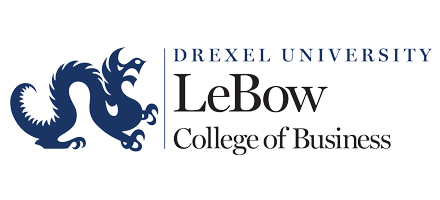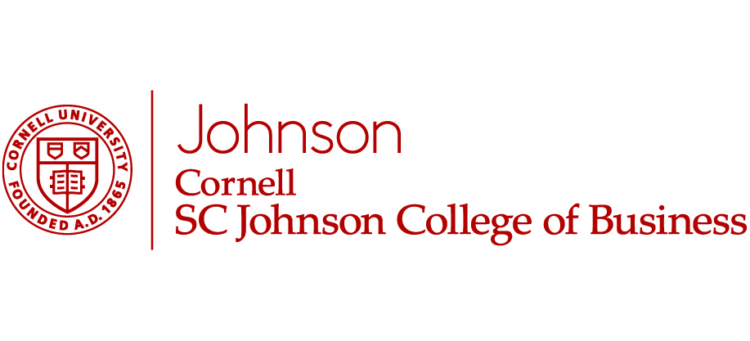
ESMT Berlin Campus in Germany. Courtesy photo
Boiled down to their base elements, executive education programs in the United States and Europe are working with remarkably similar ingredients. Executives will get a good taste of leadership, strategy, innovation, and leadership no matter which side of the pond they choose to dine.
The localized flavor is a bit more subtle and essentially comes down to customer taste. While the focus in the U.S. tends to favor measurable outcomes like sales and return on investment, European executives tend to focus more on values, purpose, and sustainable growth, says Bianca Schmitz, director of leadership development programs at ESMT Berlin.
“Medium-sized companies still make up a large part of the economy, especially in Germany. With their DNA, they are very different from large companies, international companies and also from the way American companies work,” Schmitz tells Poets&Quants. These companies impact their regions not only through taxes, but also on social initiatives in their local communities. Their executives, then, require training that is different from executives at, say, a Fortune 500 company.
TAILORING EXEC ED FOR DIFFERENT STUDENTS
Schmitz, who has been at ESMT Berlin for 12 years, has studied Germany’s family firms and mid-sized companies (called Mittelstand companies) for much of her career. She is one of the founding directors of ESMT’s Hidden Champions Institute (HCI), the world’s first academic institution dedicated to these champions. They are defined as medium-sized companies that are world market leaders in niche markets with revenues up to $5 billion. For her PhD, Schmitz studied family firms and bringing digital innovation to markets.

Bianca Schmitz
She also helped establish the Global Network for Advanced Management (GNAM), a network for business schools and other management institutions to share ideas and insights. One thing she and her colleagues have noticed is the difference between European and U.S. business schools – both in the types of students and in their approach to content.
Located in one of Europe’s hottest startup cities, ESMT was founded in 2002 by 25 multinational businesses. It offers a full-time, one-year MBA, along with an EMBA, and a portfolio of open and customized executive education programs. It ranked 43rd in the 2022 Financial Times Executive MBA global ranking, 11th in the world for open and custom exec ed programs, and, in 2019, we named it one of the five most interesting EMBA programs in Europe.
We recently sat down with Schmitz to talk about the differences in exec ed across the pond, what executives from mid-sized companies need in their training programs, and trends she’s watching in European exec ed. Our conversation has been edited for length and clarity.
What are some of the defining differences in U.S. and European executive education?
I think the most striking one is always the presence in the classroom. We find U.S. Americans to be extremely extroverted. Particularly for executives from Germany’s Hidden Champions, it’s way too outgoing in a sense. You can’t do that with German Mittelstand companies. They are more like introverted engineers, so you need to actually be softer, more calm. So this is something that comes across immediately. The way you enter the classroom, how you build trust, is different for the different types of students. In particular, for these Hidden Champion and Mittelstand companies, it’s all about trust building. They want to be able to call you at 6 a.m. or get messages even on Christmas. So, it’s this very close relationship, and they need a different style of executive education.
You mentioned that European executive education puts a bit more emphasis on the social market economy. What do you mean by that?
If you look at, for example, case studies that are written in the U.S. American context is usually about return on investment. It’s about KPIs, it’s about financial performance, it’s about growth, it’s about being better than others, about this competitive landscape.
And, yes, we in Europe also cover these concepts, but more in the context of sustainable growth. There is this long term orientation because a lot of the companies here that we work with are not stock listed. People have a longer participation in companies – 20, 30 years that they belong to a company – and they are more interested in looking at the value and into the long term direction. Not necessarily only about how they can grow but, even in times of recession, they would rather think about what they can do to build the capabilities of the people instead of fostering the sales force. This is also reflected in the way we teach things with them. It’s not that purely conventional measurement, it’s more about purposing those strong values and trust and relationships.
What do the U.S. and European approaches to exec ed have in common?
It’s basically about content. We all teach the same frameworks — Porter’s Five Forces or whatever. So the concepts are very similar, which is also clear because all of these companies operate globally. They also need to talk one language.
What I also see is that all of us teach more and more action-based learning. More interaction in the classroom, going away from pure case study and lecturing and moving to more interactive things. There’s more edutainment, which is what I always call it: People come into the classroom and want to have education but also entertainment. They want something new that they have not experienced and that is clearly different from university. We also see a trend towards more digital developments. So the combination of different channels to learn but also more individual developments and taking into consideration that those of us have various different backgrounds and experiences.
When talking about those Hidden Gems and Mittelstand companies — those mid-size companies that may be more family run — how do their needs in executive education differ from other students?
The main differences I have observed is that Hidden Champion executives are not as experienced in business education. Very often, when we see them it is the first or second contact with professional business school training. They have done a lot in house and with site trainers, but being in this sphere of business academia and business impact is something new. I often find myself in the situation where I not only have executives, but also their human resource and learning and development people who want to professionalize themselves. I support them in building a new format in thinking about L&D.
Another difference in the way you enter the content. It’s really about starting the fundamentals and kicking off the reflection process. They have done everything from a gut feeling very often, and super successfully. But then getting them into some sort of inputs and they reflect and they take this seriously. If I work with Fortune 500 companies, they all have their mobile phones, and they are busy with emails. Execs from the mid-sized companies are concentrating, and they take notes, and they really want to learn. They want to reflect on the content together. That really makes it fun.
How are these Hidden Champions and Mittelstand companies, which have traditionally been more closely tied to their locations, managing in a more hybrid work environment?
Amazingly well. They even ask for these blended formats to have more touch points to have a coherent learning journey while attending the classes that are running online. The mid sized companies also would rather have journeys that last 12 to 18 months. So, we have regular modules with regular touch points, perhaps even individual development conversations. So you treat them on a way deeper level than the Fortune 500 companies.
Describe some of the ESMT exec ed offerings for Hidden Champion and Mittelstand companies.
Usually programs for these Hidden Champions are senior exec programs. So, the classes are also small. Very often we have less than 15 people. Now, I’m running one for an automotive supplier with only six people over 14 months.
It’s usually a general management program, so we run through strategy, global strategies. corporate structures, and leadership topics. We talk about innovation, innovation culture, entrepreneurship, and how to maintain this sort of entrepreneurial spirit. We go with them to global destinations in their industry, such as the United States. In January, we are taking a group to India because it is a growing market. The companies will need experience there as well and touch base with the local management. We try to incorporate it in the learning and the training and integrate topics that are very specific for this area such as frugal innovation, social innovation, innovation from the bottom of the pyramid, and new technologies.
It’s sort of a co-created program, and we even, during the program, decide whether we need to focus more on one specific topic because their situation might have changed. We complete the framework, and then it’s more customizable with individual learning. We might say, ‘Kristy, you might need another course on a specific topic and leadership and here are some offerings.’
Why is it important to understand the differences between these approaches to executive education between U.S. and European schools? Who is this knowledge useful to?
From my perspective, as a business school professor, this knowledge of what is important to specific customers helps me in approaching them and understanding their needs and what they’re looking for.
It’s a cultural thing as well. Some of the German companies that I work with have been trying other business schools in Europe, and they come back and say, ‘They don’t understand us.’ It’s not only the language barrier, it’s this cultural understanding of the specifics of the company. So, it’s about understanding the values, it’s about understanding how they work with each other, it’s about understanding how this influences the global collaboration with other plants and subsidiaries. For example, when I work with a company like Microsoft that has specific products in Germany, I would definitely approach them differently than a mid-sized German-based company, for example.
What are some other trends in executive education that you are watching?
Definitely the topic of sustainability. This is requested by companies, but it’s also requested by laws that companies deal with. We see a lot of interest also in how to treat, how to recruit, how to retain people, and it has a lot to do with self balance. How to cope with work loads? How to resolve conflicts? How to keep workers happy and maintain a good culture? There are a couple of new topics with increased interest, such as crisis management which has been relevant for three years now — Covid, Ukraine, the upcoming recession, for example. But also hybrid and virtual leadership. These are the things that come more than before.
And what are you seeing in terms of demand?
So this year is probably one of the best years ever for many of us. Which is crazy. I think there are a couple of reasons: My assumption is, first of all, a lot of company’s training budgets have not been spent in the last three years and, now that it’s possible to go back face-to-face, they’ve started to come back. I also see in my company check ups these extremely high turnover rates, and this kind of executive training is sort of like a retention bonus. And also, I think companies are utilizing this kind of training to prepare for a recession.
DON’T MISS: IS RECESSION LIKELY, UNLIKELY, OR ALREADY HERE? A WHARTON FINANCIAL HISTORIAN WEIGHS IN AND NYU STERN’S WASHINGTON, D.C. EMBA ENROLLS ITS 5TH COHORT




